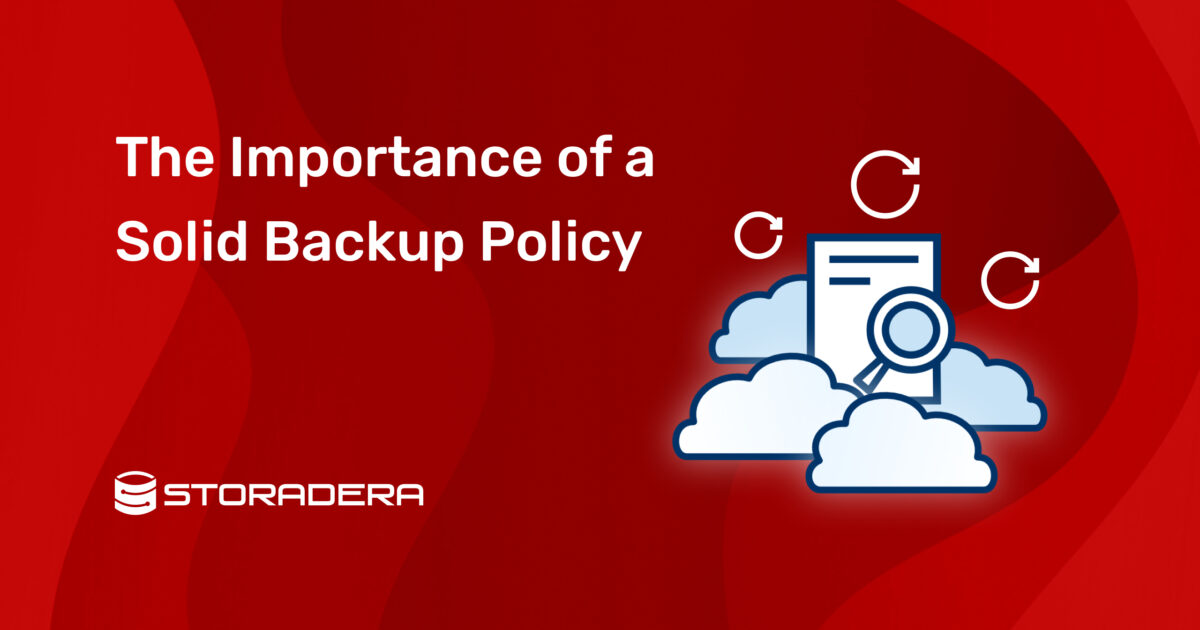
We all know that data loss can cause problems for any business. Even so, a great number of companies don’t have their disaster recovery plans in place. One of the main building blocks of a disaster recovery strategy is to have a solid backup policy. One might ask – why every company needs a solid backup policy? Also, how can a user ensure that their backed up copies are immune to ransomware – a growing threat to every organisation.
There is a general trend that ransomware attacks get more targeted over time – cybercriminals are choosing their targets carefully and attacks are sharper and demands for ransom are also higher. So how can one make sure that their recovery strategy is as simple and efficient as possible?
The 3-2-1 backup policy
Good old mantra for discussion around a solid backup strategy is the 3-2-1 rule. In a nutshell it stands for:
- Keep at least 3 copies of data
- Store the copies on at least 2 different types of media
- Keep at least 1 copy offsite
Keep at least 3 copies of data
The more copies you have the higher the chance that your data survives in case of a disaster. However, if all of your copies are digitally connected with each other by being located on the same server or network, then it probably won’t help in the case of ransomware. Most likely all copies of your data on the same network will be affected and recovery will be difficult if not impossible.
Store the copies at least 2 different types of media
All data storing appliances fail sooner or later, so a plan for data recovery needs to be at place. By having different types of devices this risk can be drastically reduced. Usually companies are backing data up to two different storage devices locally – local drives, NAS devices etc. Tape is a type of backup that can offer good protection, but is rarely part of a company’s disaster recovery process. Tape backup is almost ransomware proof, but usage flexibility has fallen behind today’s standards in most use cases and is therefore rarely an option.
Keep at least 1 copy offsite
To enhance protection and evade even natural disasters you should have at least 1 copy offsite. Cloud backup offers modern solutions for creating and keeping offsite backups in servers far from your physical location. Cloud storage service providers are usually hosting their physical servers and other infrastructure in secure datacenters with extra physical security, autonomous power supply systems, fire extinguishing systems etc to ensure maximum security for your offsite backup.
One thing to point out though is that cloud storage is not the same as cloud backup, but cloud storage can be used for cloud backup if there are functionalities such as versioning, data immutability, encryption methods for transferring data etc in place. Good cloud backup service can be an excellent option to keep your offsite copy also ransomware proof, which is a solid reason to consider cloud storage in your disaster recovery plans.
Read more about the advantages of S3 cloud storage for your business here.
Good old 3-2-1 rule should be interpreted nowadays as 3-2-1-1 rule instead
The latter “1” means that it is good to have at least one copy of data stored offsite and also offline. This ensures that in case of ransomware attack when all online copies of data will be affected with ransomware – even the same can happen to your offsite copy in the cloud.
Adding additional „1“ to the rule can be tricky in case you don’t use tape archives or external drives that are offline – how can you ensure that your offsite copy in the cloud will not be affected? There are several options. For example, consider using different tools and access credentials exclusively for adding data to your offline copy. Limit access to offline backups only for those users who have a clear legitimate need. Have offline storage as a part of your data recovery plans.

Other factors a company needs to consider for a solid backup plan
Other elements, beyond good backup policy, are – establish a disaster recovery team and train them, educate your users, test and update your plan regularly, and have good communication channels in place.
To conclude – having a good backup policy is not good enough. Businesses need a good disaster recovery strategy to be safe in the era of ransomware. More copies are better and cloud storage is generally considered a good choice for this if properly implemented. Also if you choose the right service provider like Storadera, then costwise having multiple copies of your data can be really affordable.
Find out how much it costs to store 1 PB of data here.
Why consider Storadera Space for your data backup strategy
Storadera Space is a S3 compatible cloud storage service, which currently supports most of the common use cases. In case your use case is not yet supported then we catch this information from logs and add it to our development roadmap.
Take your time and test Storadera cloud storage service and you’ll be positively surprised how easy it is to set up. Backup selection does not need to be rocket science, skip the difficult pricing tiers and try out Storadera today.
Interested in Storadera Space service?
Join us and start using Storadera!